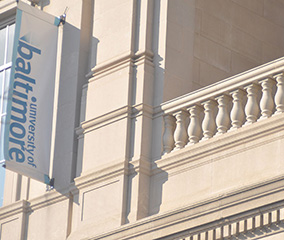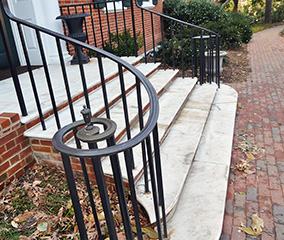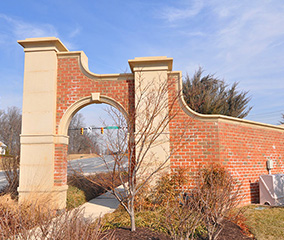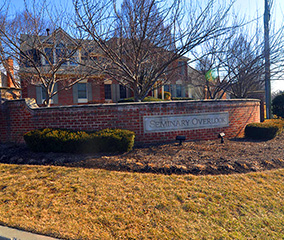 Many people like the aesthetic of painted brick for the exterior structures. Painting your brick gives it an even texture and color. Also, painted brick gives it a protective coating against the elements and erosion. But if you have decided that you want to paint your brick then here are a few steps to take to make sure that it is done successfully.
Many people like the aesthetic of painted brick for the exterior structures. Painting your brick gives it an even texture and color. Also, painted brick gives it a protective coating against the elements and erosion. But if you have decided that you want to paint your brick then here are a few steps to take to make sure that it is done successfully.
Archive for the ‘ Brick ’ Category
How to Paint Brick
Monday, May 27th, 2019The Benefits of Using Concrete Brick for Construction
Friday, September 7th, 2018
Concrete brick gives you the same classic look of traditional brick with more durability!
When you’re choosing materials for your next construction project, you should make sure that concrete brick is on your list of options. As the brick making industry has evolved, concrete brick has become a standout option thanks to its durability, appearance, and functionality. It offers all of the classic looks of traditional bricks but with significant advances in construction. Today we’ll go over a few of the reasons that concrete brick has become number one.
Enhanced Colors and Textures
One of the most significant benefits of concrete brick is that with modern technology, the color and texture can be altered to create almost any appearance. If you choose a colored option, the color is consistent throughout the brick, meaning that in case of chipping after installation, there are no color discrepancies.
Readily Available
The easy construction of concrete brick means that it can be made quickly to order, so tight deadlines can be met quickly. Often times, there is also enough pre-made to allow for immediate pickup and project startup.
Consistency
Because of the manufacturing process, which allows it to be cured in a form, concrete brick maintains a consistent, uniform size. Not only does this make for a professional, beautifully crafted appearance, but it means that any construction done with a concrete brick will have a consistent, smooth installation. The form allows for both sides of the brick to be used which means you will have less waste.
Highly Durable
If you’re looking for strong, durable construction that will last for decades, concrete brick should be at the top of your list. Concrete brick is designed for high strength and will withstand even the most excessive wear and tear. Not to mention, it can’t rot and will be less likely to crack or fracture.
Contact Del Prete Masonry Today for Your Next Construction Project!
If you are ready to upgrade your home or commercial building with professional masonry installation or replacement, Del Prete Masonry has the experience and expertise to get the job done right for the right price. To explore our residential and commercial services and set up a consultation, please give us a call at 410-683-0650 or contact us online. We currently serve Baltimore City and County, Harford County, Carroll County, Anne Arundel County, and Howard County. To see examples of our work and get more updates, follow us on Facebook, Twitter, Google+, and Pinterest.
4 Signs That Your Brick Fireplace Needs Repairs
Friday, August 3rd, 2018
A brick fireplace adds a great look to any home while also keeping it warm and cozy, but you want to make sure you know when it needs repairs!
There is nothing like a beautiful brick fireplace in your home to make things warm and cozy. Fireplaces are great additions to any home and can also add property value. You want to make sure that you take good care of your fireplace to get the best lifespan out of it. Here are four signs that your brick fireplace needs repairs.
White Dust
You want to thoroughly examine the bricks on your fireplace and look for any white stains or powder. If you do see white dust, this means that efflorescence took place on the masonry. Efflorescence is when moisture accumulates in the masonry and pushes the salt inside of it to the surface. Moisture accumulation can damage your masonry so you want to repair it if you see this sign.
Crumbling Mortar
The mortar on your brick fireplace is the white substance between the bricks that holds them all together. If you notice that the mortar seems to be crumbling and falling off the bricks or that you can pick the mortar off with your fingers, this is a sign that your fireplace needs repairs. This could be because of moisture or because the chimney is becoming weak, causing the entire formation to loosen. If you notice crumbling mortar, it’s best not to continue to use the fireplace until it gets fixed.
Firebox Rust
The firebox is the part of the fireplace where the fuel is combusted. That means that it’s the part that creates the most heat. Because of this, it should never start to rust or become corroded. Cracking and holes in the firebox is a sign of rusting and corrosion which can potentially be very dangerous. You want to repair this as soon as you notice it and take precautions so that no more moisture gets into your brick fireplace.
Flakes in Masonry
Spalling is when the masonry materials begin to flake off. If you can flake pieces off of your brick fireplace, that means that there is too much moisture present. If the masonry is spalling, it is best not to use the fireplace because it can be dangerous. Once you notice that your brick fireplace is becoming flaky or any of the above signs, you want to contact a professional to make the necessary repairs.
Contact Del Prete Masonry Today for Your Masonry Repairs!
If you are ready to upgrade your home or commercial building with professional masonry installation or replacement, Del Prete Masonry has the experience and expertise to get the job done right for the right price. To explore our residential and commercial services and set up a consultation, please give us a call at 410-683-0650 or contact us online. We currently serve Baltimore City and County, Harford County, Carroll County, Anne Arundel County, and Howard County. To see examples of our work and get more updates, follow us on Facebook, Twitter, Google+, and Pinterest.
The 5 Types of Bricks: Which is Best for Your Masonry Project?
Friday, June 15th, 2018
Brick is a great material for your masonry project and there are so many different types to choose from!
Brick is a great, classic masonry material that can be used for any building or structure. Bricks are very durable and last a long time with little maintenance, but there are multiple types. Here are the five types of bricks so that you can choose which is best for your masonry project.
Common Burnt Clay
Burnt clay bricks are made by a mold that is pressed in. The bricks are then dried and fired in a kiln to solidify them. These bricks are typically used for general construction work. They have no special appearance, making them pretty generic. Plastering is required to put these bricks into walls.
Sand Lime
A combination of sand, fly ash, and lime are what makes up sand lime bricks. A chemical process is implemented during the mixing of the material and then it’s molded to form the brick. Sand lime bricks are a gray color rather than the typical red, giving your masonry project a unique appearance. Their finish is smoother because it doesn’t require plastering like the burnt clay bricks.
Engineering
What makes engineering bricks different than others is that they are made at extremely high temperatures. This gives them more strength and density. In addition to this, they are also really good at resisting water and chemicals. These bricks are typically used for a specific or special masonry project because they cost more than regular bricks.
Concrete
These bricks are made from solid concrete and are commonly used by homebuilders. They give a building a nice aesthetic, often used for fences and facades. They can be made in a variety of different colors and are best used for a masonry project that is focused on visuals and aesthetics.
Fly Ash Clay
Clay and fly ash are combined to make this type of brick. They are combined and produced at about 1,000 degrees celsius. These bricks are more cost friendly because they cost less to install and require less mortar. The downside to these bricks is that they can tend to expand when water gets into them..
Contact Del Prete Masonry Today for Your Next Masonry Project
If you are ready to upgrade your home or commercial building with professional masonry installation or replacement, Del Prete Masonry has the experience and expertise to get the job done right for the right price. To explore our residential and commercial services and set up a consultation, please give us a call at 410-683-0650 or contact us online. We currently serve Baltimore City and County, Harford County, Carroll County, Anne Arundel County, and Howard County. To see examples of our work and get more updates, follow us on Facebook, Twitter, Google+, and Pinterest
The Process of Repairing and Repointing a Wall
Wednesday, January 31st, 2018
Whenever you have a wall that needs a little tender loving care (or mortar), it’s time to call in a repointing expert.
Repointing a brick wall is a straightforward process, but without the right supplies and process, it’s not all that easy at all! Whenever you have a wall that needs a little tender loving care (or mortar), it’s time to call in a repointing expert. Here’s what you need to know about repairing and repointing a wall. (more…)
How We Cut and Replace Brick Joints
Friday, January 26th, 2018
Masonry specialists can cut and replace brick joints professionally.
Sometimes, even though you take care of the brick around your home or business, repairs need to be done. In fact, one of the most common repairs is repointing brick joints where mortar disintegrates or around loose or cracked bricks. Letting damaged or eroded mortar go unrepaired can cause a whole host of problems, mostly from water damage that can impact your interior wall if your home’s exterior is brick. Repointing your bricks can extend the life of your home siding, patio, stairs, or walls and here is how the job gets done right: (more…)
Surface Treatments for Brick
Friday, October 27th, 2017
The brick walls outside of your home or business set your building apart with timeless appeal.
The brick walls outside of your home or business set your building apart with timeless appeal. There are many different surface treatments available that can help to further customize your brick. Here are some of our favorite surface treatments for brick. (more…)
The Basics of Repointing a Wall
Friday, September 22nd, 2017
The quality of the mortar surrounding your masonry has a direct effect on the stability and longevity of the bricks, so repointing is an essential part of brick wall maintenance.
At some point, every commercial and residential building with beautiful exterior masonry will need to be repointed. Repointing is the process of replacing the mortar in between bricks and prevents the building from water damage. The quality of the mortar surrounding your masonry has a direct effect on the stability and longevity of the bricks, so repointing is an essential part of brick wall maintenance. (more…)
Surface Treatments for Aging Bricks
Friday, June 30th, 2017
When it comes to cleaning your aging bricks there are a lot of different surface treatments you can choose. A surface treatment is a process applied to the surface of a material to make it stronger and better.
When it comes to cleaning your aging bricks there are a lot of different surface treatments you can choose. A surface treatment is a process applied to the surface of a material to make it stronger and better. This can be purely aesthetic or make it resistant to corrosion and water. Here are some different methods for treating your aging bricks. Which one should you choose? (more…)
Dealing with Brick Efflorescence
Tuesday, December 6th, 2016
Newly constructed brick masonry may have brick efflorescence occur.
Have you ever seen brickwork with powdery scum on it that’s white, brown, green or yellow? That’s what masons call efflorescence. Efflorescence has been a masonry problem for thousands of years, and occurs when deposits of water-soluble salts are left on the surface of the bricks as water evaporates. This usually happens about a month after a building is constructed, but sometimes as long as a year after completion. (more…)





























